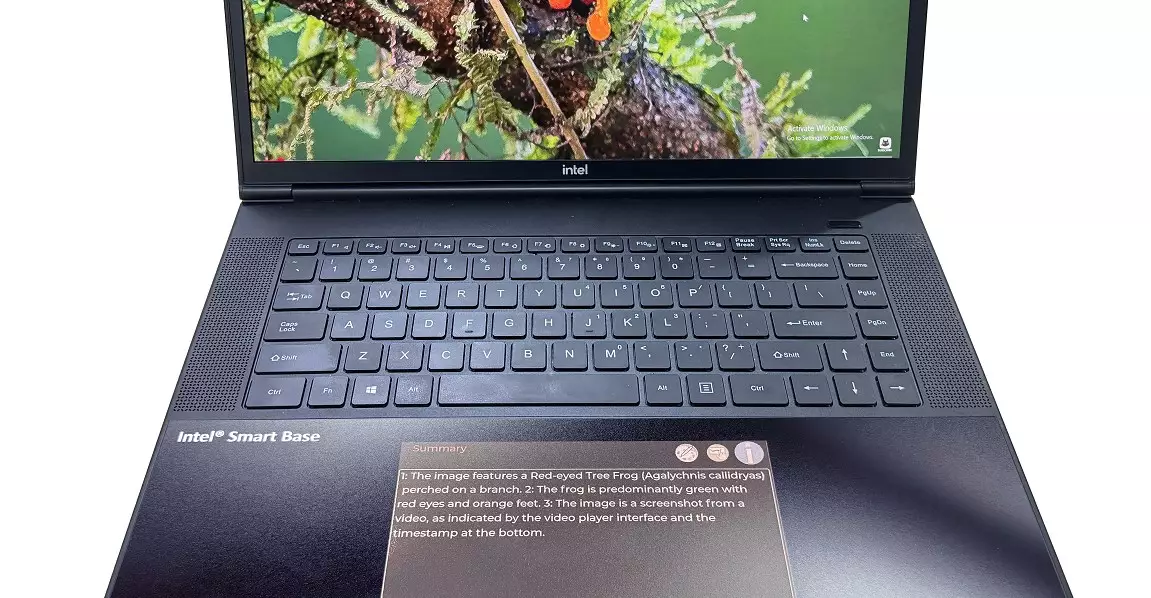In the rapidly evolving landscape of personal computing, innovation often hinges on the subtle reimagining of existing components. E Ink’s latest venture—integrating its groundbreaking low-power, full-color electronic paper technology into laptop touchpads—embodies this mindset. This development promises more than just a novel gadget feature; it signals a paradigm shift in how users interact with their devices. Instead of the traditional reliance on a single, static keyboard or a secondary display serving as a mere extension, the new E Ink touchpad proposes a dedicated, customizable space that empowers users with instant access to AI-driven insights, personalized shortcuts, and real-time notifications—all while maintaining minimal power consumption.
This concept pushes the boundaries of conventional laptop design. It encourages manufacturers and consumers alike to think about input and information display as an integrated, dynamic ecosystem. The touchpad could serve as a constant, context-aware interface—one that seamlessly transitions from a control panel for quick commands to a live text window, showcasing summaries or AI interactions without cluttering the main workspace. Such a shift not only enhances multitasking but also elevates the laptop’s potential as a smart, intuitive tool tailored for productivity and immersive engagement.
Limitations and Challenges in Current Technology
Despite its promise, the adoption of E Ink’s color displays in laptops faces several hurdles. For starters, the technology’s primary advantage—exceptional power efficiency—comes with a trade-off in visual vibrancy and responsiveness compared to traditional LCDs or OLEDs. While well-suited for static content like text or icons, E Ink’s refresh rates and color accuracy may fall short in applications demanding rapid visuals or multimedia playback. This technical constraint raises questions about whether the touchpad can handle the fluidity required for more interactive tasks or high-quality media control.
Moreover, the size and resolution of the upcoming color e-paper displays remain uncertain. Will they be large enough to facilitate complex AI interactions or only serve as simple notification panels? The lack of specific technical details makes it difficult to gauge the true potential of this technology. When integrating into laptops, the compatibility with existing operating systems and the necessity of custom drivers or software also add layers of complexity. Such issues could delay adoption or limit functionality to niche markets until further development ensures seamless integration.
Another aspect worth scrutinizing is user distraction. A full-color, always-on screen, even if low-power, could divert attention from primary tasks, especially if not carefully designed. Striking a balance between utility and distraction will be crucial, and it’s uncertain whether E Ink’s technology can handle such nuanced user experience considerations at scale.
Potential Transformations in Workflow and Design
If successfully integrated, E Ink’s low-power touchpads could dramatically redefine how we think about laptop ergonomics and workflows. Imagine a scenario where a writer consults an AI assistant that provides real-time summaries of research articles directly on their touchpad—without switching windows or launching new applications. This constant stream of contextual information could streamline workflows, making multitasking more intuitive and less intrusive.
Design-wise, the notion of a dedicated space for AI interactions offers manufacturers an opportunity to rethink hardware layouts. laptops could evolve to feature larger, more expressive touchpads that are as functional as they are aesthetic. Additionally, by reducing reliance on traditional function keys or secondary screens, developers could free up space for more integrated controls, such as quick-access shortcuts or dynamic widgets that adapt to user behavior.
However, the success of such transformations hinges on addressing practical concerns—battery longevity, user interface design, and the overall impact on device cost. If E Ink’s technology can truly deliver on its promise of power efficiency and versatility, it could push competitors to innovate in the same arena, leading to a more intelligent, user-centric era of portable computing.
Looking Ahead: The Future of Low-Power, Smart Surfaces
E Ink’s venture represents an intriguing step toward a future where laptops are not just external displays of power and speed, but holistic interfaces augmented with sustainable, always-on surfaces. While still in its infancy, the concept underscores a broader trend: the integration of smarter, more environmentally conscious display solutions that prioritize energy efficiency without sacrificing functionality.
For technology enthusiasts, this signals an exciting horizon—one where devices aren’t merely tools crafted for performance but are adaptive companions that learn, assist, and evolve with users. Although many technical details remain shrouded in mystery, the potential is unmistakable. If the industry rallies around these innovations, we could witness a new standard in laptop design—one that marries minimalism, intelligence, and sustainability in ways previously thought impossible.

